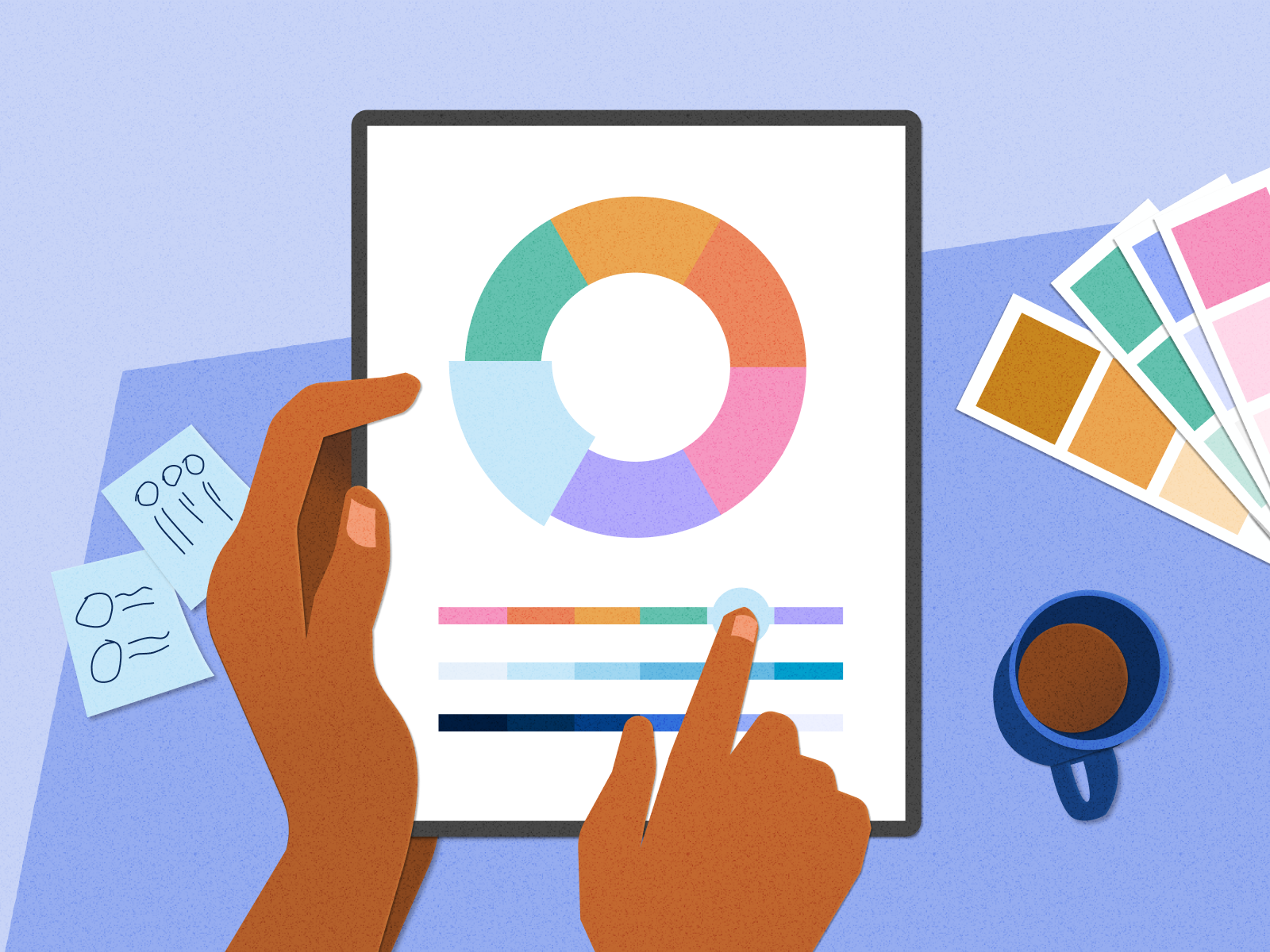The Duty of Color Theory in Enhancing Your Website Design Tasks
By comprehending the psychological implications of color selections, designers can successfully affect user habits and improve the general user experience. The calculated application of color schemes not only enhances brand identity however additionally guides customer interactions through thoughtfully created aesthetic pecking orders.

Understanding Color Theory
Comprehending color concept is vital for reliable web layout, as it encompasses the concepts behind just how colors communicate and influence assumption. Color theory is rooted in the color wheel, which categorizes colors right into main, secondary, and tertiary teams, developing the structure for shade mixes. Primaries-- red, blue, and yellow-- can not be produced by blending other colors, while secondary colors are formed by combining primaries. Tertiary colors emerge from mixing a primary shade with a secondary shade.
Trick principles in color concept include harmony, contrast, and temperature. Shade harmony associates to the aesthetic balance attained with corresponding, similar, or triadic shade schemes.
Additionally, recognizing cozy and cool shades aids in crafting the wanted mood and atmosphere for a site. Cozy shades stimulate power and excitement, while amazing shades advertise peace and tranquility. Grasping these concepts enables designers to develop cohesive, impactful, and memorable web experiences that resonate with users.
Psychological Results of Color
Colors have the power to evoke certain feelings and affect customer habits, making their psychological impacts a crucial factor to consider in web style. Various colors can cause distinct feelings and associations, affecting exactly how customers perceive and engage with an internet site.
As an example, blue is usually related to trust fund and professionalism and reliability, making it a prominent option for business and financial sites. In contrast, red can evoke a sense of necessity or enjoyment, often utilized in call-to-action switches to prompt immediate reactions. Yellow, with its bright and happy tone, can influence positive outlook, while green typically represents growth and harmony, making it optimal for environmental or wellness-focused sites.
Furthermore, the cultural context of shade plays a substantial function in its psychological effect. As an example, white is typically associated with purity in Western societies, whereas in some Eastern societies, it might represent mourning.
Comprehending these subtleties enables designers to craft experiences that resonate with their target market, boosting customer interaction and fostering a deeper emotional link. By leveraging the mental results of shade, web developers can create a lot more reliable and compelling digital settings that lead individual actions strategically.
Shade Harmony and Schemes
Attaining shade consistency is essential for developing visually appealing web designs that involve users effectively. Color harmony describes the pleasing setup of shades, which can considerably enhance the total aesthetic of a web site. Different color pattern can be used to accomplish this harmony, each serving an unique function and psychological result.
Single systems, which utilize differing shades and tints of a single shade, create a cohesive and innovative appearance - Web design in Penang. Corresponding schemes, including colors opposite each various other on the shade wheel, produce high comparison and vibrancy, capturing focus and boosting interest. Analogous color pattern, including colors that are adjacent on the shade wheel, use a more serene and unified feeling, suitable for soothing interfaces
Triadic plans utilize three colors evenly spaced around the color wheel, supplying a balanced and vibrant look, ideal for more lively designs. Understanding and implementing these color systems click here to read effectively can cause boosted individual experience and brand name recognition. Inevitably, the option of a color design should straighten with the web site's objective and target audience, guaranteeing that the aesthetic impact reverberates well with customers while maintaining useful quality.
Accessibility Factors To Consider
Focusing on access in website design ensures that all individuals, despite their abilities, can engage with the content efficiently. An essential component of this is the mindful application of color concept. Developers have to consider the comparison in between message and background shades to boost readability for people with aesthetic problems, including color blindness. The Internet Material Access Guidelines (WCAG) advise a contrast ratio of at least 4.5:1 for regular message to ensure clarity.

Additionally, it is vital to check shade choices with numerous individual teams, consisting of those who rely upon assistive modern technologies. Tools such as color comparison analyzers can assist in examining availability conformity properly. By More about the author incorporating these considerations right into the style procedure, internet developers can develop inclusive digital experiences that reverberate with a varied target market, promoting higher involvement and satisfaction.
Practical Applications in Website Design
Efficient implementation of color concept in website design can significantly enhance individual experience and involvement. By strategically choosing shade palettes, designers can communicate brand identification, stimulate emotions, and guide customer interactions. For example, using contrasting shades for call-to-action switches not just makes them stick out however additionally urges clicks, therefore increasing conversion prices.
In addition, the application of corresponding shades can develop visual harmony, making content extra absorbable. Designers should likewise think about the mental impact of shades; for example, blue typically communicates count additional reading on, while red can evoke urgency. This understanding permits for tailored layouts that reverberate with the target market.
Integrating shade gradients can add deepness and sophistication to a website, while monochromatic systems can create a minimalist aesthetic. Additionally, maintaining uniformity in color use throughout various web pages guarantees a cohesive customer experience, reinforcing brand name acknowledgment.
Lastly, ease of access should be a priority; making certain sufficient contrast proportions enables all users, consisting of those with aesthetic impairments, to browse the site successfully. By attentively using color theory, internet designers can produce visually attractive and useful sites that enhance user contentment and foster brand loyalty.
Verdict
To conclude, shade theory significantly influences internet style by forming individual experience and psychological feedback. By leveraging the psychological impacts of color, developers can produce compelling aesthetic narratives that line up with brand identity. Executing harmonious color design improves visual charm, while ease of access considerations make sure inclusivity for all users. Ultimately, the critical application of color concept not just boosts design top quality however also fosters interaction and satisfaction, making it a necessary facet of effective website design methods.